Birbal Sahni Institute of Palaeobotany
 | |
Former names | Institute of Palaeobotany, Birbal Sahni Institute of Palaeobotany |
|---|---|
| Type | Registered Society |
| Established | 1946 |
| Location |
Lucknow, Uttar Pradesh, India 26°52′03″N 80°56′20″E / 26.86750°N 80.93889°E |
| Campus | 53 University Road, Lucknow |
| Nickname | BSIP |
| Website | BSIP |
.jpg) | |
| Bust of Birbal Sahni at Birla Industrial & Technological Museum | |
The Birbal Sahni Institute of Palaeobotany (acronym BSIP)[1] is an autonomous institute constituted under the Department of Science and Technology, Government of India. The Institute is located at Lucknow,[2] Uttar Pradesh, India and is a seat of higher learning in the field of plant fossil research.
Profile
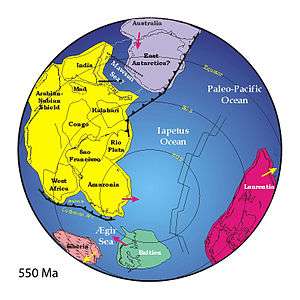
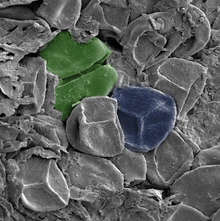
The Birbal Sahni Institute of Palaeobotany was established in the year 1946, under the name, Institute of Palaeobotany, a progression of the Palaeobotanical society formed by a group of botanists led by the renowned Indian botanist, Professor Birbal Sahni,[3] known as the father of Dendrology,[4][5] who became its first Director.[6] The initial office of the Institute was at the Department of Botany, Lucknow University. The then government of the United Provinces gifted a bungalow sitting on 3.50 acres of land to the Institute in 1948, which till today remains its campus.[7]
Savitri Sahni, took over the reins of the Institute on her husband's death in 1949 and the Institute moved into a new purpose-built building in 1953. The Institute, by that time, had already started to be known and, in 1951, UNESCO included it in their Technical Assistance Program. On 9 July 1969, the research activities were alienated from the society and Birbal Sahni Institute of Palaeobotany was formed, in honor of the scientist,[5] as an independent autonomous research organization funded by the Government of India.[8]
BSIP works in close coordination with various organizations such as Geological Survey of India, Physical Research Laboratory, Oil and Natural Gas Commission, Oil India Limited, Coal India Limited, Coal Mine Planning and Design Institute, Council of Scientific and Industrial Research Laboratory, Neyveli Lignite Corporation, Mineral Exploration Corporation Limited, Indian Institutes of Technology, Institute Francais de Pondicherry, Botanical Survey of India, Forest Research Institute, Dehradun, Bhabha Atomic Research Center, Laboratories under Department of Science and Technology, Archaeological Survey of India, Wadia Institute of Himalayan Geology, different State and University Departments of Archaeology and Geology Departments of several Universities. The Institute has signed specific MOUs with Oil and natural Gas Corporation, Geological Survey of India (Coal Wing), Delta Studies Institute, Vishakhapattanam (for delta/basin modeling in relation to paramecia and hydrocarbon exploration) and National Institute of Oceanography, Goa (for Quaternary palaeoclimate of marine and coastal areas).
Objectives
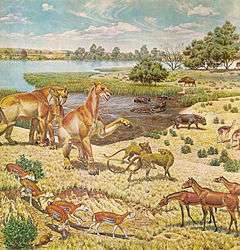


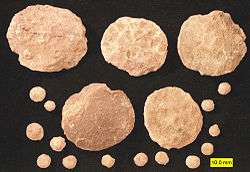
The main objectives of the Institute are set as:[9]
- To develop palaeobotany in all its botanical and geological aspects.
- To constantly update data for interaction with allied disciplines.
- To co-ordinate with other palaeobotanical and geological research centres in the areas of mutual interest, such as diversification of early life, exploration of fossil fuels, vegetational dynamics, climatic modelling, conservation of forests.
- To disseminate palaeobotanical knowledge in universities, educational institutions and other organisations.
Thrust areas
The Institute has identified the thrust areas of activities on:
- Pre-Cambrian Palaeobiology
- Gondwana Mezozoic Palaeofloristics[10]
- Gondwana Palynology
- Cenozoic Palaeofloristics
- Late Mezozoic-Cenozoic Palynology
- Marine Micropaleontology
- Organic Petrology
- Quaternary Paleoclimate
- Dendrochronology
- Paleoethnobotany
- Isotope and Geochemistry
- Arctic-Antarctic Research
Departments
Museum
BSIP nurses a museum,[11] originally housing the fossil collections of Professor Sahni, but now holds later collections made by the scientists over the years. The collection includes holotype specimens, slides and figured specimens.
- Figured specimens : 6679
- Figured slides : 12740
- Slide negatives : 17504
The museum, with its foundation stone, laid by Birbal Sahni, composed of fossils of various geological ages embedded in a marble-cement block, displays the specimens based on their general and geological relevance. The museum also maintains a Geological Time Clock.
Knowledge Resource Centre
The Institute library is an automated one with database services such as GEOREF, Web of Science, JCCC@INSTIRC and access to CSIR-DST consortium. It operates on a fully integrated multi-user LIBSYS 4 software package with addition of Web OPAC. The journals are made available online to the users.
Herbarium
The Herbarium functions with four different sections:
- General collection of dried plants mounted on herbarium sheets
- Xylarium - collection of woods and their thin sections
- Sporothek - collection of pollen and spore slides and polleniferous material
- Carpothek - collection of fruits, seeds
The fossil specimens such as leaves, cuticle, pollen, spores, fruits, seed and wood, numbering 51,472, are preserved according to their variation, local names, uses, distribution and ecology and include contributions from J. F. Duthie, R. R. Stewart, K. N. Kaul, Birbal Sahni, O. A. Hoeg and A. L. Takhtajan.
Computer Centre
BSIP is well equipped with an advanced computer network with LAN, radio link facility from the Software Park of India, Lucknow and National Knowledge Network connection. The web site of the Institute is also maintained by the Computer Centre.
Awards
| Part of a series on |
| Paleontology |
|---|
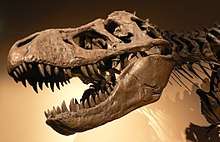 |
|
Organs and processes |
|
History of paleontology |
|
Branches of paleontology |
|
Paleontology Portal Category |
BSIP recognizes the achievements in the field of Palaeobotany by giving away many awards to the deserving scientists.
Professor T. M. Harris Medal: Awarded to the best paper published on Palaeobotany in any recognized journal.
Dr. P. N. Srivastava Medal: Awarded to the best research work done in the Institute.
Chandra Dutt Pant Memorial Medal: Awarded to the best research work by a Scientist in Grade C.
Dr. Chunni Lal Khatiyal Medal: Awarded to the best research work by a Scientist in Grade A.
Dr. Pratul Chandra Bhandari Medal: Awarded to the best research work by a BISP scholar.
Iyengar-Sahni Medal: Awarded to the best paper published in The Palaeobotanist.
Dr. B. S. Venkatachala Memorial Medal: Awarded to the best paper published in Palaeobotany.
Team Medal: Awarded to the best team for collaborative efforts.
Diamond Jubilee Medal: Awarded to the best research paper published by a scientist or a team.
Scientific Out Put Medal: Awarded to the best research work by a scientist in Grades E, F or G.
In addition, BISP also recognizes in-house administrative achievements in the form of medals such as External Budgetary Resource Medal, Efficient Administrative Staff Medal and BSIP Employee Medal.
The Palaeobotanist
The Palaeobotanist is a widely acknowledged journal in Palaeobotany, published by the Institute. BSIP published the first volume in 1952 as an annual publication. However, the frequency has been increased over the time and, since 1962, is released three times a year.[12]
References
- ↑ Birbal Sahni Institute of Palaeobotany - What does BSIP stand for? Acronyms and abbreviations by the Free Online Dictionary
- ↑ Map from Lucknow Junction to Birbal Sahni Institute of Palaeobotany
- ↑ Birbal Sahni Archived 1 January 2016 at the Wayback Machine.
- ↑ Birbal Sahni, father of the Dendrology - YouTube
- 1 2 Birbal Sahni, father of the Dendrology| Birbal Sahni did extensive research in Paleobotany
- ↑ India Religion Home Page
- ↑ Birbal Sahni Institute of Palaeobotany, Lucknow - Admission, Courses, Fee, Contact Address | BSIP | Lucknow | Uttar Pradesh - Minglebox
- ↑ Birbal Sahni Institute of Palaeobotany (BSIP) - Lucknow - Address Phone no Website Email Turnover - MD CEO HR CFO CIO
- ↑ Welcome to Department of Science and Technology, Govt. of India :: Archived 17 July 2014 at the Wayback Machine.
- ↑ http://bomax.botany.pl/pubs/data/article_pdf?id=1952
- ↑ Birbal Sahni Institute of Palaeobotany Museum | Museums
- ↑ The palaeobotanist. (Journal, magazine, 1952) [WorldCat.org]
External links
- Reference on the Department of Science and Technology web site
- News report in the Times of India.
- Notification for recruitment
- Profile of Birbal Sahni on Paleobotany web site
- List of Publications on Research gate
- Conference leaflet
- on Wikimapia
- List of Publications on National Library of Australia site
- Reference on University Directory
Further reading
- Birbal Sahni Institute of Palaeobotany. The Palaeobotanist. Lucknow : Birbal Sahni Institute of Palaeobotany. ISSN 0031-0174.
- Vasishta, P C. Botany For Degree Gymnosperm. Lucknow: S Chand. ISBN 9788121926188.